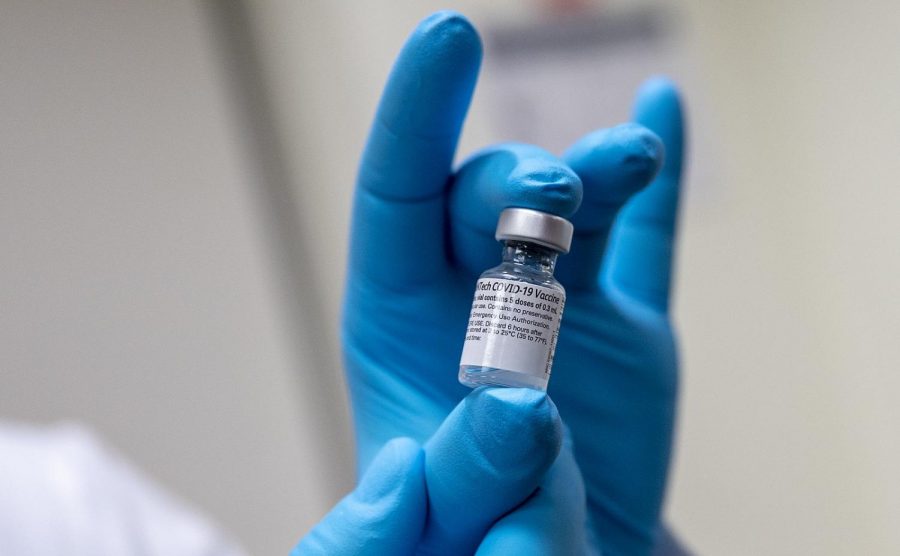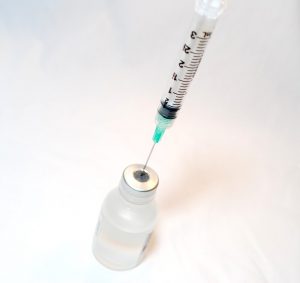New strains of SARS-COV-2 spread, vaccination efforts garner mixed results
Photo used with permission from Google Commons.
The BioNTech COVID-19 vaccine pictured is one of several vaccines to be approved for use by the U.S. Food and Drug Administration.
The COVID-19 pandemic has continued on into 2021, and as time has gone on, the virus itself has begun to change.
Several new strains of the SARS-CoV-2 virus have appeared, with the first, called B.1.1.7 by the CDC, being reported in Britain in September of last year. The new strain does not cause more severe illness or increased chance of death on an individual level. “There are about 23 genetic changes in this strain. There’s some preliminary suggestion that it’s more [contagious], and, although that’s not proven, scientists are noticing a surge of cases in areas where the new strain is appearing, and there could be a connection. … We are not seeing any indication that the new strain is more virulent or dangerous in terms of causing more severe COVID-19 disease,” said Robert Bollinger, M.D, M.P.H., concerning B.1.1.7.
The virus’ goal is to survive and reproduce, which it can do more easily with a more contagious virus, as opposed to one that kills too quickly and thereby gives the virus less time to reproduce.
The CDC also states that the new strain seems to spread faster than the old variation. Johns Hopkins University reports that “In December, it became the most common version of the coronavirus, accounting for about 60 percent of new COVID-19 cases.”
Another strain, 1.351, has been found in South Africa, and shares similarities with B.1.1.7. A third, P.1, was found in four travellers who were flying from Brazil to Japan at the time, with the CDC stating that “This variant contains a set of additional mutations that may affect its ability to be recognized by antibodies.”
As of December 29, the B.1.1.7 strand has entered the U.S. starting in Colorado, as well as 31 other nations excluding Britain, according to The New York Times. Federal health officials in January warned that the new strain could become the primary source of infection from COVID-19 in the U.S., which could increase the number of Coronavirus cases in the country once again. With the U.S. already reaching over 400,000 deaths due to the virus, CDC health officials are cautious and have urged people to take precautions, according to The New York Times.
Information on the new strain is still comparatively scarce. “As far as this latest strain is concerned, we don’t need to overreact. But, as with any virus, changes are something to be watched, to ensure that testing and vaccines are still effective. The scientists will continue to examine new versions of this coronavirus’ genetic sequencing as it evolves,” Bollinger said.
Health officials urge people to remain careful. “I want to stress that we are deeply concerned that this strain is more transmissible and can accelerate outbreaks in the U.S. in the coming weeks. We’re sounding the alarm and urging people to realize the pandemic is not over and in no way is it time to throw in the towel,” deputy director for infectious diseases at the C.D.C Dr. Jay Butler said.
With the prospect of the potential danger the new strands represents in the U.S., citizens have tried to gain access to the newly developed COVID-19 vaccine, but have been left with limited success, with Apoorva Mandavilli and Roni Caryn Rabin of The New York Times stating that “The nation’s nascent vaccination campaign appeared to be scattershot and still disappointingly elusive for most Americans. It was hampered by confusion over eligibility for people beyond frontline health workers, miscommunication over increasingly limited supplies as demand grew and by bungled rollouts from state to state.”
Your donation will support the student journalists of Thomas S. Wootton High School. Your contribution will allow us to purchase equipment and cover our annual website hosting costs.
Elliot Wang is a 2021 graduate.









